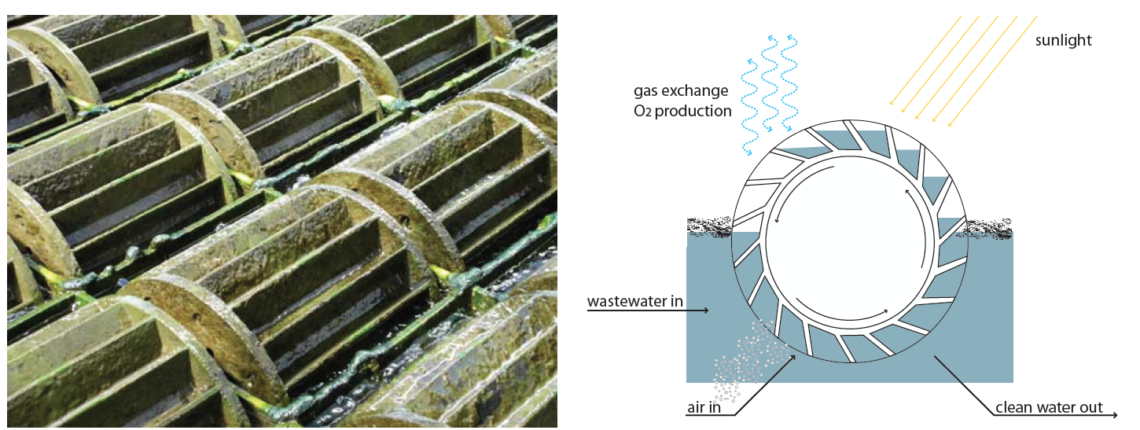March 1, 2012
Photosynthetic Energy and Ecological Recycling: The Architectural Potential of Algae Cultivation
Conference paper in Digital Aptitudes: Proceedings of the 100th ACSA Annual Meeting, 2012

Algae as wastewater treatment
Abstract
Designers are expanding the definition of Ecological Design by incorporating biological processes and systems directly in their design. Systems like green roofs and living machines have proved themselves invaluable for reducing a design’s overall environmental footprint. Algae-based energy is almost 30 times less expensive per unit than energy generated by photovoltaic technology, and algae biodiesel can already be produced at market-competitive prices. With its efficient energy production and potential for improving the health of the surrounding air and water, algae cultivation is the next photosynthetically driven system primed for architectural integration.
This paper examines the various methods of algae farming, its opportunities to support cyclical systems, its design implications, and its integration into urban space. Cultivation methods range from low-tech open ponds to computer-automated bioreactors. Algae can effectively sequester carbon dioxide and treat wastewater while increasing its growth efficiency. These properties give it great potential for integration with other intrastructural systems like wastewater systems. These synergies can be developed into closed-loop systems within the built environment, resulting in lower CO2 emissions, nutrient reuse and efficient energy generation. These multi-layered benefits of algae cultivation initiate a rethinking of the relationships between sunlight, alternative energy and material recycling. This paper argues these new relationships have strong potential for future development of algae-integrated systems. Possibilities include integration into urban landscapes, existing building stock and power generation on the neighborhood scale. Challenges include economically down-scaling algal systems, onsite harvesting and the logistics of combining new infrastructures. Algae’s high ecological performance generates a multi-fold contribution towards improving the health of the environment. With its combination of carbon neutral/negative energy production and ecological recycling of environmental pollutants, the integration of algae cultivation in the built environment opens a new dimension to ecological design.
Citation
Proksch, Gundula. 2012. “Photosynthetic Energy and Ecological Recycling: The Architectural Potential of Algae Cultivation,” Digital Aptitudes: Proceedings of the 100th ACSA Annual Meeting, Boston, MA, March 1-4, (Washington, DC: ACSA Press, 2012), 371-381.
